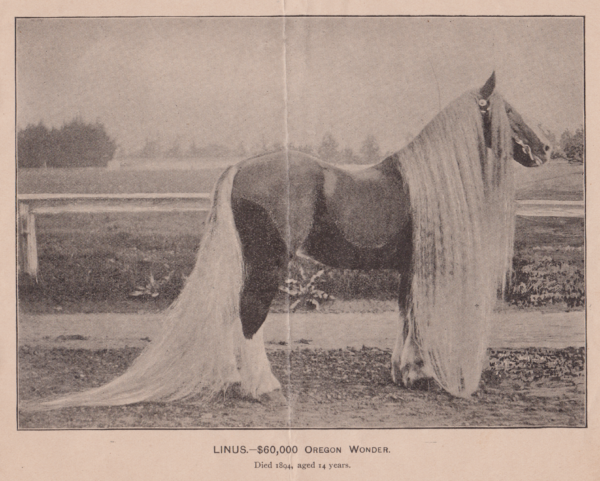The popular belief that many ancient peoples had red hair is often encountered in discussions about historical and archaeological findings. However, research indicates that this assumption might be more myth than reality. To understand this phenomenon, it’s important to delve into the factors affecting hair color in archaeological samples and the reasons behind the misinterpretation of hair pigmentation in a historical context.
Archaeological Hair Samples and Color Changes: In archaeology, hair samples, both human and animal, frequently exhibit a red coloration. However, this change in hair color can be attributed to various post-mortem or post-depositional factors. For instance, photo-degradation of pigment granules due to prolonged sunlight exposure can alter the hairs’ original color. Over time, the melanin pigment granules in the hair may oxidize, leading to a noticeable color shift. A study of hair samples from an Australian Aboriginal youth that were a century-old revealed significant lightening of pigment granules in the oldest part of the hair, which is likely a result of prolonged sunlight exposure.
Environmental Factors and Hair Lightening: Environmental conditions play a significant role in the lightening of pigmented hair. Sometimes these archaeological hair samples are found preserved in perma-frost, while other samples may come from mummified remains, and a few samples come from bodies found in peat bogland. Studies have shown that hair tends to lighten more noticeably in low latitude regions with high humidity. An experiment with unpigmented dog hair exposed to high humidity resulted in a distinct yellow-orange coloration, partly due to fungal growth on the hair surface. This phenomenon has also been observed in the hair of extinct woolly mammoths and similar megafauna, where the shafts turned orange/red.
Chemical Reactions and Keratin Alteration: Chemical reactions impacting hair pigments account for some of the red coloration observed in some archaeological hair samples. In particular, the acidic nature of peat bog can turn hair, and indeed clothing of bodies buried in bogland, a distinct red-brown color. Interestingly, hair samples devoid of pigmentation can also exhibit red coloration. This has been attributed to the alteration of the chemical structure of keratin (the protein that forms the main structure of hair) whether by acids or enzymes. Such alterations can occur in both ancient and modern animal hairs and are crucial in understanding the natural versus acquired color of these samples.
The Use of Hair Dye in Ancient Cultures: In addition to the natural and environmental factors influencing hair color, it’s important to consider the use of hair dye in ancient cultures. Hair dyeing has been a part of human grooming practices for thousands of years. A notable example is ancient Egypt, where henna was commonly used as a hair dye. Henna, derived from the Lawsonia inermis plant, imparts a reddish-brown color and was popular among Egyptians for its aesthetic appeal and its purported health benefits. The presence of henna on the hair of ancient Egyptian mummies is particularly fascinating. In some cases, the henna dye applied during the individual’s lifetime is still evident in their mummified remains. In other examples, it has been shown that henna was applied to the hair of the mummy after death as part of a ritual. This enduring presence of henna offers a unique glimpse into the grooming practices, aesthetic preferences, and religious beliefs of ancient Egyptians and other historical cultures. It also underscores the need to differentiate between natural hair color and the application of dyes when examining archaeological hair samples.
Natural Red Hair Characteristics: Naturally red (ginger) hair displays distinct characteristics compared to other hair colors. In natural red hair, pigment granules are usually distributed in the medial (central) part of the shaft. This distribution is different from brown or black hair, where pigment granules are more evenly spread throughout the hair fiber. With hair dye, the color can be seen relatively uniformly in the outer layers of the hair fiber, while with chemical alteration of hair keratins, there is a diffuse coloration throughout the hair. Hence, when examining archaeological hair samples, it is important to distinguish whether the red color is inherent or a result of external factors. Looking at the location of the pigment granules in the hair can help determine which hair is naturally red.
Implications for Archaeological and Historical Research: The belief that ancient peoples commonly had red hair likely stems from the observation of these color changes in various archaeological samples. The prevalence of natural red hair in ancient populations was probably no more common than it is today. The misconception arises from the misinterpretation of the hair’s color due to the factors mentioned above. This understanding has significant implications for archaeological and historical research. It highlights the need for careful analysis of hair samples found in archaeological contexts to determine their original color. When determining true hair color, researchers consider environmental, chemical, and biological factors that could have altered the hairs’ appearance over time.
Conclusion: The notion that many ancient peoples had red hair is more a myth than historical fact. The red coloration often observed in archaeological hair samples is usually the result of environmental, chemical, or biological factors rather than an indication of the original hair color. This understanding is crucial for accurately interpreting historical and archaeological findings and avoiding misconceptions about the physical characteristics of ancient populations. As we continue to study and understand the past, it’s essential to approach such findings with a critical eye and a scientific understanding of the factors that can alter the physical properties of archaeological materials.
Bibliography
11711645 {11711645:PK4ICUFW},{11711645:3GTBZ28T},{11711645:8U8G9CMQ},{11711645:ZIUUK22E},{11711645:N4QC32EH},{11711645:VUX5WDBG},{11711645:PHP6WVC7} vancouver 50 date asc 681 https://www.keratin.com/wp-content/plugins/zotpress/ %7B%22status%22%3A%22success%22%2C%22updateneeded%22%3Afalse%2C%22instance%22%3A%22zotpress-848924b8e88dfceafc0db24bca8b9c9f%22%2C%22meta%22%3A%7B%22request_last%22%3A0%2C%22request_next%22%3A0%2C%22used_cache%22%3Atrue%7D%2C%22data%22%3A%5B%7B%22key%22%3A%22VUX5WDBG%22%2C%22library%22%3A%7B%22id%22%3A11711645%7D%2C%22meta%22%3A%7B%22creatorSummary%22%3A%22Wilson%20et%20al.%22%2C%22parsedDate%22%3A%222001-10-01%22%2C%22numChildren%22%3A0%7D%2C%22bib%22%3A%22%3Cdiv%20class%3D%5C%22csl-bib-body%5C%22%20style%3D%5C%22line-height%3A%201.35%3B%20%5C%22%3E%5Cn%20%20%3Cdiv%20class%3D%5C%22csl-entry%5C%22%20style%3D%5C%22clear%3A%20left%3B%20%5C%22%3E%5Cn%20%20%20%20%3Cdiv%20class%3D%5C%22csl-left-margin%5C%22%20style%3D%5C%22float%3A%20left%3B%20padding-right%3A%200.5em%3B%20text-align%3A%20right%3B%20width%3A%201em%3B%5C%22%3E1.%3C%5C%2Fdiv%3E%3Cdiv%20class%3D%5C%22csl-right-inline%5C%22%20style%3D%5C%22margin%3A%200%20.4em%200%201.5em%3B%5C%22%3EWilson%20AS%2C%20Dixon%20RA%2C%20Dodson%20HI%2C%20Janaway%20RC%2C%20Pollard%20AM%2C%20Stern%20B%2C%20et%20al.%20Yesterday%26%23x2019%3Bs%20hair--human%20hair%20in%20archaeology.%20Biologist%20%28London%29.%202001%20Oct%201%3B48%285%29%3A213%26%23x2013%3B7.%3C%5C%2Fdiv%3E%5Cn%20%20%20%3C%5C%2Fdiv%3E%5Cn%3C%5C%2Fdiv%3E%22%2C%22data%22%3A%7B%22itemType%22%3A%22journalArticle%22%2C%22title%22%3A%22Yesterday%27s%20hair--human%20hair%20in%20archaeology%22%2C%22creators%22%3A%5B%7B%22creatorType%22%3A%22author%22%2C%22firstName%22%3A%22A.%20S.%22%2C%22lastName%22%3A%22Wilson%22%7D%2C%7B%22creatorType%22%3A%22author%22%2C%22firstName%22%3A%22R.%20A.%22%2C%22lastName%22%3A%22Dixon%22%7D%2C%7B%22creatorType%22%3A%22author%22%2C%22firstName%22%3A%22H.%20I.%22%2C%22lastName%22%3A%22Dodson%22%7D%2C%7B%22creatorType%22%3A%22author%22%2C%22firstName%22%3A%22R.%20C.%22%2C%22lastName%22%3A%22Janaway%22%7D%2C%7B%22creatorType%22%3A%22author%22%2C%22firstName%22%3A%22A.%20M.%22%2C%22lastName%22%3A%22Pollard%22%7D%2C%7B%22creatorType%22%3A%22author%22%2C%22firstName%22%3A%22B.%22%2C%22lastName%22%3A%22Stern%22%7D%2C%7B%22creatorType%22%3A%22author%22%2C%22firstName%22%3A%22D.%20J.%22%2C%22lastName%22%3A%22Tobin%22%7D%5D%2C%22abstractNote%22%3A%22Hair%20removed%20from%20archaeological%20burials%20can%20tell%20us%20a%20lot%20about%20the%20diet%20and%20lifestyle%20of%20our%20ancestors--information%20that%20may%20survive%20because%20of%20the%20unique%20biology%20of%20hair%20formation.%20But%20hair%20is%20also%20biodegradable%20and%20the%20effects%20of%20time%20and%20burial%20conditions%20can%20result%20in%20conflicting%20evidence%20of%20past%20lives.%22%2C%22date%22%3A%222001-10-01%22%2C%22language%22%3A%22eng%22%2C%22DOI%22%3A%22%22%2C%22ISSN%22%3A%222516-5151%22%2C%22url%22%3A%22%22%2C%22collections%22%3A%5B%2249KVJP6S%22%5D%2C%22dateModified%22%3A%222023-12-15T17%3A16%3A17Z%22%7D%7D%2C%7B%22key%22%3A%223GTBZ28T%22%2C%22library%22%3A%7B%22id%22%3A11711645%7D%2C%22meta%22%3A%7B%22creatorSummary%22%3A%22Liu%20et%20al.%22%2C%22parsedDate%22%3A%222005%22%2C%22numChildren%22%3A0%7D%2C%22bib%22%3A%22%3Cdiv%20class%3D%5C%22csl-bib-body%5C%22%20style%3D%5C%22line-height%3A%201.35%3B%20%5C%22%3E%5Cn%20%20%3Cdiv%20class%3D%5C%22csl-entry%5C%22%20style%3D%5C%22clear%3A%20left%3B%20%5C%22%3E%5Cn%20%20%20%20%3Cdiv%20class%3D%5C%22csl-left-margin%5C%22%20style%3D%5C%22float%3A%20left%3B%20padding-right%3A%200.5em%3B%20text-align%3A%20right%3B%20width%3A%201em%3B%5C%22%3E1.%3C%5C%2Fdiv%3E%3Cdiv%20class%3D%5C%22csl-right-inline%5C%22%20style%3D%5C%22margin%3A%200%20.4em%200%201.5em%3B%5C%22%3ELiu%20Y%2C%20Hong%20L%2C%20Wakamatsu%20K%2C%20Ito%20S%2C%20Adhyaru%20B%2C%20Cheng%20C%2C%20et%20al.%20Comparison%20of%20Structural%20and%20Chemical%20Properties%20of%20Black%20and%20Red%20Human%20Hair%20Melanosomes.%20Photochem%20%26amp%3B%20Photobiology.%202005%3B81%281%29%3A135%26%23x2013%3B44.%3C%5C%2Fdiv%3E%5Cn%20%20%20%3C%5C%2Fdiv%3E%5Cn%3C%5C%2Fdiv%3E%22%2C%22data%22%3A%7B%22itemType%22%3A%22journalArticle%22%2C%22title%22%3A%22Comparison%20of%20Structural%20and%20Chemical%20Properties%20of%20Black%20and%20Red%20Human%20Hair%20Melanosomes%22%2C%22creators%22%3A%5B%7B%22creatorType%22%3A%22author%22%2C%22firstName%22%3A%22Yan%22%2C%22lastName%22%3A%22Liu%22%7D%2C%7B%22creatorType%22%3A%22author%22%2C%22firstName%22%3A%22Lian%22%2C%22lastName%22%3A%22Hong%22%7D%2C%7B%22creatorType%22%3A%22author%22%2C%22firstName%22%3A%22Kazumasa%22%2C%22lastName%22%3A%22Wakamatsu%22%7D%2C%7B%22creatorType%22%3A%22author%22%2C%22firstName%22%3A%22Shosuke%22%2C%22lastName%22%3A%22Ito%22%7D%2C%7B%22creatorType%22%3A%22author%22%2C%22firstName%22%3A%22Bhavin%22%2C%22lastName%22%3A%22Adhyaru%22%7D%2C%7B%22creatorType%22%3A%22author%22%2C%22firstName%22%3A%22Chi%5Cu2010Yuan%22%2C%22lastName%22%3A%22Cheng%22%7D%2C%7B%22creatorType%22%3A%22author%22%2C%22firstName%22%3A%22Clifford%20R.%22%2C%22lastName%22%3A%22Bowers%22%7D%2C%7B%22creatorType%22%3A%22author%22%2C%22firstName%22%3A%22John%20D.%22%2C%22lastName%22%3A%22Simon%22%7D%5D%2C%22abstractNote%22%3A%22ABSTRACT%20%5Cn%20%20%20%20%20%20%20%20%20%20%20%20%20%5Cn%20%20%20%20%20%20%20%20%20%20%20%20%20%20Melanosomes%20in%20black%20and%20red%20human%20hair%20are%20isolated%20and%20characterized%20by%20various%20chemical%20and%20physical%20techniques.%20Different%20yields%20of%204%5Cu2010amino%5Cu2010hydroxyphenolanaline%20by%20HI%20hydrolysis%20%28a%20marker%20for%20pheomelanin%29%20and%20pyrrole%5Cu20102%2C3%2C5%5Cu2010tricarboxylic%20acid%20by%20KMnO%20%5Cn%20%20%20%20%20%20%20%20%20%20%20%20%20%204%20%5Cn%20%20%20%20%20%20%20%20%20%20%20%20%20%20%5C%2FH%20%5Cn%20%20%20%20%20%20%20%20%20%20%20%20%20%20%2B%20%5Cn%20%20%20%20%20%20%20%20%20%20%20%20%20%20oxidation%20%28a%20marker%20for%20eumelanin%29%20indicate%20that%20the%20melanosomes%20in%20black%20hair%20are%20eumelanosomes%2C%20whereas%20those%20in%20red%20hair%20are%20mainly%20pheomelanosomes.%20Atomic%20force%20microscopy%20reveals%20that%20eumelanosomes%20and%20pheomelanosomes%20have%20ellipsoidal%20and%20spherical%20shapes%2C%20respectively.%20Eumelanosomes%20maintain%20structural%20integrity%20upon%20extraction%20from%20the%20keratin%20matrix%2C%20whereas%20pheomelanosomes%20tend%20to%20fall%20apart.%20The%20black%5Cu2010hair%20eumelanosomes%20have%20an%20average%20of%2014.6%20%5Cu00b1%200.5%25%20amino%20acids%20content%2C%20which%20is%20attributed%20to%20the%20internal%20proteins%20entrapped%20in%20the%20melanosomes%20granules.%20The%20red%5Cu2010hair%20melanosomes%20contain%20more%20than%2044%25%20of%20amino%20acid%20content%20even%20after%20extensive%20proteolytic%20digestion.%20This%20high%20content%20of%20amino%20acids%20and%20the%20poorly%20reserved%20integrity%20of%20red%5Cu2010hair%20melanosomes%20suggest%20that%20some%20proteins%20are%20possibly%20covalently%20bonded%20with%20the%20melanin%20constituents%20in%20addition%20to%20those%20that%20are%20entrapped%20inside%20the%20melanin%20species.%20Soluene%20solubilization%20assay%20indicates%20the%20absorbance%20of%20melanin%20per%20gram%20of%20sample%2C%20adjusted%20for%20the%20amino%20acid%20content%2C%20is%20a%20factor%20of%202.9%20greater%20for%20the%20black%5Cu2010hair%20melanosomes%20than%20the%20red%5Cu2010hair%20melanosomes.%20Metal%20analysis%20reveals%20significant%20amounts%20of%20diverse%20heavy%20metal%20ions%20bound%20to%20the%20two%20types%20of%20melanosomes.%20The%20amount%20of%20Cu%28II%29%20and%20Zn%28II%29%20are%20similar%20but%20Fe%28III%29%20content%20is%20four%20times%20higher%20in%20the%20red%5Cu2010hair%20melanosomes.%20%5Cn%20%20%20%20%20%20%20%20%20%20%20%20%20%2013%20%5Cn%20%20%20%20%20%20%20%20%20%20%20%20%20%20C%20solid%5Cu2010state%20nuclear%20magnetic%20resonance%20spectra%20and%20infrared%20spectra%20are%20presented%20and%20are%20shown%20to%20be%20powerful%20techniques%20for%20discerning%20differences%20in%20the%20amino%20acid%20contents%2C%20the%205%2C6%5Cu2010dihydroxyindole%5Cu20102%5Cu2010carboxylic%20acid%3A5%2C6%5Cu2010dihydroxyindole%20ratio%2C%20and%20the%20degree%20of%20cross%5Cu2010linking%20in%20the%20pigment.%20Excellent%20agreement%20is%20observed%20between%20these%20spectral%20results%20and%20the%20chemical%20degradation%20data.%22%2C%22date%22%3A%2201%5C%2F2005%22%2C%22language%22%3A%22en%22%2C%22DOI%22%3A%2210.1111%5C%2Fj.1751-1097.2005.tb01532.x%22%2C%22ISSN%22%3A%220031-8655%2C%201751-1097%22%2C%22url%22%3A%22%22%2C%22collections%22%3A%5B%2249KVJP6S%22%5D%2C%22dateModified%22%3A%222023-12-15T17%3A36%3A36Z%22%7D%7D%2C%7B%22key%22%3A%228U8G9CMQ%22%2C%22library%22%3A%7B%22id%22%3A11711645%7D%2C%22meta%22%3A%7B%22creatorSummary%22%3A%22Rasmussen%20et%20al.%22%2C%22parsedDate%22%3A%222011-10-07%22%2C%22numChildren%22%3A0%7D%2C%22bib%22%3A%22%3Cdiv%20class%3D%5C%22csl-bib-body%5C%22%20style%3D%5C%22line-height%3A%201.35%3B%20%5C%22%3E%5Cn%20%20%3Cdiv%20class%3D%5C%22csl-entry%5C%22%20style%3D%5C%22clear%3A%20left%3B%20%5C%22%3E%5Cn%20%20%20%20%3Cdiv%20class%3D%5C%22csl-left-margin%5C%22%20style%3D%5C%22float%3A%20left%3B%20padding-right%3A%200.5em%3B%20text-align%3A%20right%3B%20width%3A%201em%3B%5C%22%3E1.%3C%5C%2Fdiv%3E%3Cdiv%20class%3D%5C%22csl-right-inline%5C%22%20style%3D%5C%22margin%3A%200%20.4em%200%201.5em%3B%5C%22%3ERasmussen%20M%2C%20Guo%20X%2C%20Wang%20Y%2C%20Lohmueller%20KE%2C%20Rasmussen%20S%2C%20Albrechtsen%20A%2C%20et%20al.%20An%20Aboriginal%20Australian%20genome%20reveals%20separate%20human%20dispersals%20into%20Asia.%20Science.%202011%20Oct%207%3B334%286052%29%3A94%26%23x2013%3B8.%3C%5C%2Fdiv%3E%5Cn%20%20%20%3C%5C%2Fdiv%3E%5Cn%3C%5C%2Fdiv%3E%22%2C%22data%22%3A%7B%22itemType%22%3A%22journalArticle%22%2C%22title%22%3A%22An%20Aboriginal%20Australian%20genome%20reveals%20separate%20human%20dispersals%20into%20Asia%22%2C%22creators%22%3A%5B%7B%22creatorType%22%3A%22author%22%2C%22firstName%22%3A%22Morten%22%2C%22lastName%22%3A%22Rasmussen%22%7D%2C%7B%22creatorType%22%3A%22author%22%2C%22firstName%22%3A%22Xiaosen%22%2C%22lastName%22%3A%22Guo%22%7D%2C%7B%22creatorType%22%3A%22author%22%2C%22firstName%22%3A%22Yong%22%2C%22lastName%22%3A%22Wang%22%7D%2C%7B%22creatorType%22%3A%22author%22%2C%22firstName%22%3A%22Kirk%20E.%22%2C%22lastName%22%3A%22Lohmueller%22%7D%2C%7B%22creatorType%22%3A%22author%22%2C%22firstName%22%3A%22Simon%22%2C%22lastName%22%3A%22Rasmussen%22%7D%2C%7B%22creatorType%22%3A%22author%22%2C%22firstName%22%3A%22Anders%22%2C%22lastName%22%3A%22Albrechtsen%22%7D%2C%7B%22creatorType%22%3A%22author%22%2C%22firstName%22%3A%22Line%22%2C%22lastName%22%3A%22Skotte%22%7D%2C%7B%22creatorType%22%3A%22author%22%2C%22firstName%22%3A%22Stinus%22%2C%22lastName%22%3A%22Lindgreen%22%7D%2C%7B%22creatorType%22%3A%22author%22%2C%22firstName%22%3A%22Mait%22%2C%22lastName%22%3A%22Metspalu%22%7D%2C%7B%22creatorType%22%3A%22author%22%2C%22firstName%22%3A%22Thibaut%22%2C%22lastName%22%3A%22Jombart%22%7D%2C%7B%22creatorType%22%3A%22author%22%2C%22firstName%22%3A%22Toomas%22%2C%22lastName%22%3A%22Kivisild%22%7D%2C%7B%22creatorType%22%3A%22author%22%2C%22firstName%22%3A%22Weiwei%22%2C%22lastName%22%3A%22Zhai%22%7D%2C%7B%22creatorType%22%3A%22author%22%2C%22firstName%22%3A%22Anders%22%2C%22lastName%22%3A%22Eriksson%22%7D%2C%7B%22creatorType%22%3A%22author%22%2C%22firstName%22%3A%22Andrea%22%2C%22lastName%22%3A%22Manica%22%7D%2C%7B%22creatorType%22%3A%22author%22%2C%22firstName%22%3A%22Ludovic%22%2C%22lastName%22%3A%22Orlando%22%7D%2C%7B%22creatorType%22%3A%22author%22%2C%22firstName%22%3A%22Francisco%20M.%22%2C%22lastName%22%3A%22De%20La%20Vega%22%7D%2C%7B%22creatorType%22%3A%22author%22%2C%22firstName%22%3A%22Silvana%22%2C%22lastName%22%3A%22Tridico%22%7D%2C%7B%22creatorType%22%3A%22author%22%2C%22firstName%22%3A%22Ene%22%2C%22lastName%22%3A%22Metspalu%22%7D%2C%7B%22creatorType%22%3A%22author%22%2C%22firstName%22%3A%22Kasper%22%2C%22lastName%22%3A%22Nielsen%22%7D%2C%7B%22creatorType%22%3A%22author%22%2C%22firstName%22%3A%22Mar%5Cu00eda%20C.%22%2C%22lastName%22%3A%22%5Cu00c1vila-Arcos%22%7D%2C%7B%22creatorType%22%3A%22author%22%2C%22firstName%22%3A%22J.%20V%5Cu00edctor%22%2C%22lastName%22%3A%22Moreno-Mayar%22%7D%2C%7B%22creatorType%22%3A%22author%22%2C%22firstName%22%3A%22Craig%22%2C%22lastName%22%3A%22Muller%22%7D%2C%7B%22creatorType%22%3A%22author%22%2C%22firstName%22%3A%22Joe%22%2C%22lastName%22%3A%22Dortch%22%7D%2C%7B%22creatorType%22%3A%22author%22%2C%22firstName%22%3A%22M.%20Thomas%20P.%22%2C%22lastName%22%3A%22Gilbert%22%7D%2C%7B%22creatorType%22%3A%22author%22%2C%22firstName%22%3A%22Ole%22%2C%22lastName%22%3A%22Lund%22%7D%2C%7B%22creatorType%22%3A%22author%22%2C%22firstName%22%3A%22Agata%22%2C%22lastName%22%3A%22Wesolowska%22%7D%2C%7B%22creatorType%22%3A%22author%22%2C%22firstName%22%3A%22Monika%22%2C%22lastName%22%3A%22Karmin%22%7D%2C%7B%22creatorType%22%3A%22author%22%2C%22firstName%22%3A%22Lucy%20A.%22%2C%22lastName%22%3A%22Weinert%22%7D%2C%7B%22creatorType%22%3A%22author%22%2C%22firstName%22%3A%22Bo%22%2C%22lastName%22%3A%22Wang%22%7D%2C%7B%22creatorType%22%3A%22author%22%2C%22firstName%22%3A%22Jun%22%2C%22lastName%22%3A%22Li%22%7D%2C%7B%22creatorType%22%3A%22author%22%2C%22firstName%22%3A%22Shuaishuai%22%2C%22lastName%22%3A%22Tai%22%7D%2C%7B%22creatorType%22%3A%22author%22%2C%22firstName%22%3A%22Fei%22%2C%22lastName%22%3A%22Xiao%22%7D%2C%7B%22creatorType%22%3A%22author%22%2C%22firstName%22%3A%22Tsunehiko%22%2C%22lastName%22%3A%22Hanihara%22%7D%2C%7B%22creatorType%22%3A%22author%22%2C%22firstName%22%3A%22George%22%2C%22lastName%22%3A%22van%20Driem%22%7D%2C%7B%22creatorType%22%3A%22author%22%2C%22firstName%22%3A%22Aashish%20R.%22%2C%22lastName%22%3A%22Jha%22%7D%2C%7B%22creatorType%22%3A%22author%22%2C%22firstName%22%3A%22Fran%5Cu00e7ois-Xavier%22%2C%22lastName%22%3A%22Ricaut%22%7D%2C%7B%22creatorType%22%3A%22author%22%2C%22firstName%22%3A%22Peter%22%2C%22lastName%22%3A%22de%20Knijff%22%7D%2C%7B%22creatorType%22%3A%22author%22%2C%22firstName%22%3A%22Andrea%20B.%22%2C%22lastName%22%3A%22Migliano%22%7D%2C%7B%22creatorType%22%3A%22author%22%2C%22firstName%22%3A%22Irene%22%2C%22lastName%22%3A%22Gallego%20Romero%22%7D%2C%7B%22creatorType%22%3A%22author%22%2C%22firstName%22%3A%22Karsten%22%2C%22lastName%22%3A%22Kristiansen%22%7D%2C%7B%22creatorType%22%3A%22author%22%2C%22firstName%22%3A%22David%20M.%22%2C%22lastName%22%3A%22Lambert%22%7D%2C%7B%22creatorType%22%3A%22author%22%2C%22firstName%22%3A%22S%5Cu00f8ren%22%2C%22lastName%22%3A%22Brunak%22%7D%2C%7B%22creatorType%22%3A%22author%22%2C%22firstName%22%3A%22Peter%22%2C%22lastName%22%3A%22Forster%22%7D%2C%7B%22creatorType%22%3A%22author%22%2C%22firstName%22%3A%22Bernd%22%2C%22lastName%22%3A%22Brinkmann%22%7D%2C%7B%22creatorType%22%3A%22author%22%2C%22firstName%22%3A%22Olaf%22%2C%22lastName%22%3A%22Nehlich%22%7D%2C%7B%22creatorType%22%3A%22author%22%2C%22firstName%22%3A%22Michael%22%2C%22lastName%22%3A%22Bunce%22%7D%2C%7B%22creatorType%22%3A%22author%22%2C%22firstName%22%3A%22Michael%22%2C%22lastName%22%3A%22Richards%22%7D%2C%7B%22creatorType%22%3A%22author%22%2C%22firstName%22%3A%22Ramneek%22%2C%22lastName%22%3A%22Gupta%22%7D%2C%7B%22creatorType%22%3A%22author%22%2C%22firstName%22%3A%22Carlos%20D.%22%2C%22lastName%22%3A%22Bustamante%22%7D%2C%7B%22creatorType%22%3A%22author%22%2C%22firstName%22%3A%22Anders%22%2C%22lastName%22%3A%22Krogh%22%7D%2C%7B%22creatorType%22%3A%22author%22%2C%22firstName%22%3A%22Robert%20A.%22%2C%22lastName%22%3A%22Foley%22%7D%2C%7B%22creatorType%22%3A%22author%22%2C%22firstName%22%3A%22Marta%20M.%22%2C%22lastName%22%3A%22Lahr%22%7D%2C%7B%22creatorType%22%3A%22author%22%2C%22firstName%22%3A%22Francois%22%2C%22lastName%22%3A%22Balloux%22%7D%2C%7B%22creatorType%22%3A%22author%22%2C%22firstName%22%3A%22Thomas%22%2C%22lastName%22%3A%22Sicheritz-Pont%5Cu00e9n%22%7D%2C%7B%22creatorType%22%3A%22author%22%2C%22firstName%22%3A%22Richard%22%2C%22lastName%22%3A%22Villems%22%7D%2C%7B%22creatorType%22%3A%22author%22%2C%22firstName%22%3A%22Rasmus%22%2C%22lastName%22%3A%22Nielsen%22%7D%2C%7B%22creatorType%22%3A%22author%22%2C%22firstName%22%3A%22Jun%22%2C%22lastName%22%3A%22Wang%22%7D%2C%7B%22creatorType%22%3A%22author%22%2C%22firstName%22%3A%22Eske%22%2C%22lastName%22%3A%22Willerslev%22%7D%5D%2C%22abstractNote%22%3A%22We%20present%20an%20Aboriginal%20Australian%20genomic%20sequence%20obtained%20from%20a%20100-year-old%20lock%20of%20hair%20donated%20by%20an%20Aboriginal%20man%20from%20southern%20Western%20Australia%20in%20the%20early%2020th%20century.%20We%20detect%20no%20evidence%20of%20European%20admixture%20and%20estimate%20contamination%20levels%20to%20be%20below%200.5%25.%20We%20show%20that%20Aboriginal%20Australians%20are%20descendants%20of%20an%20early%20human%20dispersal%20into%20eastern%20Asia%2C%20possibly%2062%2C000%20to%2075%2C000%20years%20ago.%20This%20dispersal%20is%20separate%20from%20the%20one%20that%20gave%20rise%20to%20modern%20Asians%2025%2C000%20to%2038%2C000%20years%20ago.%20We%20also%20find%20evidence%20of%20gene%20flow%20between%20populations%20of%20the%20two%20dispersal%20waves%20prior%20to%20the%20divergence%20of%20Native%20Americans%20from%20modern%20Asian%20ancestors.%20Our%20findings%20support%20the%20hypothesis%20that%20present-day%20Aboriginal%20Australians%20descend%20from%20the%20earliest%20humans%20to%20occupy%20Australia%2C%20likely%20representing%20one%20of%20the%20oldest%20continuous%20populations%20outside%20Africa.%22%2C%22date%22%3A%222011-10-07%22%2C%22language%22%3A%22eng%22%2C%22DOI%22%3A%2210.1126%5C%2Fscience.1211177%22%2C%22ISSN%22%3A%221095-9203%22%2C%22url%22%3A%22%22%2C%22collections%22%3A%5B%2249KVJP6S%22%5D%2C%22dateModified%22%3A%222023-12-15T17%3A17%3A16Z%22%7D%7D%2C%7B%22key%22%3A%22N4QC32EH%22%2C%22library%22%3A%7B%22id%22%3A11711645%7D%2C%22meta%22%3A%7B%22creatorSummary%22%3A%22Tridico%20et%20al.%22%2C%22parsedDate%22%3A%222014-01-01%22%2C%22numChildren%22%3A0%7D%2C%22bib%22%3A%22%3Cdiv%20class%3D%5C%22csl-bib-body%5C%22%20style%3D%5C%22line-height%3A%201.35%3B%20%5C%22%3E%5Cn%20%20%3Cdiv%20class%3D%5C%22csl-entry%5C%22%20style%3D%5C%22clear%3A%20left%3B%20%5C%22%3E%5Cn%20%20%20%20%3Cdiv%20class%3D%5C%22csl-left-margin%5C%22%20style%3D%5C%22float%3A%20left%3B%20padding-right%3A%200.5em%3B%20text-align%3A%20right%3B%20width%3A%201em%3B%5C%22%3E1.%3C%5C%2Fdiv%3E%3Cdiv%20class%3D%5C%22csl-right-inline%5C%22%20style%3D%5C%22margin%3A%200%20.4em%200%201.5em%3B%5C%22%3ETridico%20SR%2C%20Rigby%20P%2C%20Kirkbride%20KP%2C%20Haile%20J%2C%20Bunce%20M.%20Megafaunal%20split%20ends%3A%20microscopical%20characterisation%20of%20hair%20structure%20and%20function%20in%20extinct%20woolly%20mammoth%20and%20woolly%20rhino.%20Quaternary%20Science%20Reviews.%202014%20Jan%201%3B83%3A68%26%23x2013%3B75.%3C%5C%2Fdiv%3E%5Cn%20%20%20%3C%5C%2Fdiv%3E%5Cn%3C%5C%2Fdiv%3E%22%2C%22data%22%3A%7B%22itemType%22%3A%22journalArticle%22%2C%22title%22%3A%22Megafaunal%20split%20ends%3A%20microscopical%20characterisation%20of%20hair%20structure%20and%20function%20in%20extinct%20woolly%20mammoth%20and%20woolly%20rhino%22%2C%22creators%22%3A%5B%7B%22creatorType%22%3A%22author%22%2C%22firstName%22%3A%22Silvana%20R.%22%2C%22lastName%22%3A%22Tridico%22%7D%2C%7B%22creatorType%22%3A%22author%22%2C%22firstName%22%3A%22Paul%22%2C%22lastName%22%3A%22Rigby%22%7D%2C%7B%22creatorType%22%3A%22author%22%2C%22firstName%22%3A%22K.%20Paul%22%2C%22lastName%22%3A%22Kirkbride%22%7D%2C%7B%22creatorType%22%3A%22author%22%2C%22firstName%22%3A%22James%22%2C%22lastName%22%3A%22Haile%22%7D%2C%7B%22creatorType%22%3A%22author%22%2C%22firstName%22%3A%22Michael%22%2C%22lastName%22%3A%22Bunce%22%7D%5D%2C%22abstractNote%22%3A%22The%20large%20extinct%20megafaunal%20species%20of%20the%20Late%20Pleistocene%2C%20Mammuthus%20primigenius%20%28woolly%20mammoth%29%20and%20Coelodonta%20antiquitatis%20%28woolly%20rhino%29%20are%20renowned%20for%20their%20pelage.%20Despite%20this%2C%20very%20little%20research%20has%20been%20conducted%20on%20the%20form%20and%20function%20of%20hair%20from%20these%20iconic%20species.%20Using%20permafrost%20preserved%20hair%20samples%20from%20seven%20extinct%20megafaunal%20remains%2C%20this%20study%20presents%20an%20in-depth%20microscopical%20characterisation%20of%20preservation%2C%20taphonomy%2C%20microbial%20damage%2C%20pigmentation%20and%20morphological%20features%20of%20more%20than%20420%20hairs.%20The%20presence%20of%20unique%20structural%20features%20in%20hairs%2C%20from%20two%20extinct%20megafauna%20species%2C%20such%20as%20multiple%20medullae%20and%20unparallelled%20stiffness%20suggests%20evolution%20of%20traits%20that%20may%20have%20been%20critical%20for%20their%20survival%20in%20the%20harsh%20arctic%20environment.%20Lastly%2C%20despite%20popular%20depictions%20of%20red-haired%20and%5C%2For%20uniformly%20coloured%20mammoths%2C%20a%20closer%20examination%20of%20pigmentation%20reveals%20that%20mammoth%20coats%20may%20have%20exhibited%20a%20mottled%5C%2Fvariegated%20appearance%20and%20that%20their%20%5Cu2018true%5Cu2019%20colours%20were%20not%20the%20vivid%20red%5C%2Forange%20colour%20often%20depicted%20in%20reconstructions.%20Insights%20gained%20from%20microscopical%20examination%20of%20hundreds%20of%20extinct%20megafauna%20hairs%20demonstrate%20the%20value%20of%20extracting%20as%20much%20morphological%20data%20as%20possible%20from%20ancient%20hairs%20prior%20to%20destructive%20sampling%20for%20molecular%20analyses.%22%2C%22date%22%3A%222014-01-01%22%2C%22language%22%3A%22%22%2C%22DOI%22%3A%2210.1016%5C%2Fj.quascirev.2013.10.032%22%2C%22ISSN%22%3A%220277-3791%22%2C%22url%22%3A%22%22%2C%22collections%22%3A%5B%2249KVJP6S%22%5D%2C%22dateModified%22%3A%222023-12-15T17%3A15%3A43Z%22%7D%7D%2C%7B%22key%22%3A%22ZIUUK22E%22%2C%22library%22%3A%7B%22id%22%3A11711645%7D%2C%22meta%22%3A%7B%22creatorSummary%22%3A%22Tridico%20et%20al.%22%2C%22parsedDate%22%3A%222014-12-07%22%2C%22numChildren%22%3A0%7D%2C%22bib%22%3A%22%3Cdiv%20class%3D%5C%22csl-bib-body%5C%22%20style%3D%5C%22line-height%3A%201.35%3B%20%5C%22%3E%5Cn%20%20%3Cdiv%20class%3D%5C%22csl-entry%5C%22%20style%3D%5C%22clear%3A%20left%3B%20%5C%22%3E%5Cn%20%20%20%20%3Cdiv%20class%3D%5C%22csl-left-margin%5C%22%20style%3D%5C%22float%3A%20left%3B%20padding-right%3A%200.5em%3B%20text-align%3A%20right%3B%20width%3A%201em%3B%5C%22%3E1.%3C%5C%2Fdiv%3E%3Cdiv%20class%3D%5C%22csl-right-inline%5C%22%20style%3D%5C%22margin%3A%200%20.4em%200%201.5em%3B%5C%22%3ETridico%20SR%2C%20Koch%20S%2C%20Michaud%20A%2C%20Thomson%20G%2C%20Kirkbride%20KP%2C%20Bunce%20M.%20Interpreting%20biological%20degradative%20processes%20acting%20on%20mammalian%20hair%20in%20the%20living%20and%20the%20dead%3A%20which%20ones%20are%20taphonomic%3F%20Proc%20R%20Soc%20B.%202014%20Dec%207%3B281%281796%29%3A20141755.%3C%5C%2Fdiv%3E%5Cn%20%20%20%3C%5C%2Fdiv%3E%5Cn%3C%5C%2Fdiv%3E%22%2C%22data%22%3A%7B%22itemType%22%3A%22journalArticle%22%2C%22title%22%3A%22Interpreting%20biological%20degradative%20processes%20acting%20on%20mammalian%20hair%20in%20the%20living%20and%20the%20dead%3A%20which%20ones%20are%20taphonomic%3F%22%2C%22creators%22%3A%5B%7B%22creatorType%22%3A%22author%22%2C%22firstName%22%3A%22Silvana%20R.%22%2C%22lastName%22%3A%22Tridico%22%7D%2C%7B%22creatorType%22%3A%22author%22%2C%22firstName%22%3A%22Sandra%22%2C%22lastName%22%3A%22Koch%22%7D%2C%7B%22creatorType%22%3A%22author%22%2C%22firstName%22%3A%22Amy%22%2C%22lastName%22%3A%22Michaud%22%7D%2C%7B%22creatorType%22%3A%22author%22%2C%22firstName%22%3A%22Gordon%22%2C%22lastName%22%3A%22Thomson%22%7D%2C%7B%22creatorType%22%3A%22author%22%2C%22firstName%22%3A%22K.%20Paul%22%2C%22lastName%22%3A%22Kirkbride%22%7D%2C%7B%22creatorType%22%3A%22author%22%2C%22firstName%22%3A%22Michael%22%2C%22lastName%22%3A%22Bunce%22%7D%5D%2C%22abstractNote%22%3A%22Although%20the%20taphonomic%20%28post-mortem%29%20degradation%20processes%20relevant%20to%20teeth%20and%20bones%20have%20been%20well%20described%2C%20those%20taking%20place%20with%20regards%20to%20mammalian%20hairs%20have%20not%20been%20characterized%20to%20the%20same%20extent.%20This%20present%20article%20describes%2C%20in%20detail%2C%20microscopic%20changes%20resulting%20from%20the%20actions%20of%20biological%20agents%20that%20digest%20and%20degrade%20hairs.%20The%20most%20noteworthy%20and%20prevalent%20agents%20responsible%20for%20the%20destruction%20of%20hair%20structure%20are%20fungi%2C%20which%20use%20a%20range%20of%20strategies%20to%20invade%20and%20digest%20hairs.%20One%20of%20the%20most%20important%20finds%20to%20emerge%20from%20this%20study%20is%20that%20taphonomic%20structures%20and%20processes%20can%20easily%20be%20interpreted%20by%20the%20unwary%20as%20%5Cu2018real%5Cu2019%2C%20or%20as%20class%20characteristics%20for%20a%20particular%20animal%20taxon.%20Moreover%2C%20under%20certain%20conditions%2C%20%5Cu2018taphonomic%5Cu2019%20processes%20normally%20associated%20with%20the%20dead%20are%20also%20present%20on%20the%20hairs%20of%20the%20living.%20This%20work%20will%20improve%20the%20reliability%20of%20hair%20examinations%20in%20forensic%2C%20archaeological%20and%20palaeontological%20applications%5Cu2014in%20addition%2C%20the%20finding%20has%20relevance%20in%20the%20protection%20of%20mammalian%20collections%20susceptible%20to%20infestation.%20This%20article%20also%20addresses%20the%20popular%20myth%20that%20ancient%20peoples%20were%20often%20red-haired%20and%20discusses%20phenomena%20responsible%20for%20this%20observation.%20Insights%20gained%20from%20detailed%20characterization%20of%20taphonomic%20processes%20in%2095%20hairs%20from%20a%20variety%20of%20species%20demonstrate%20the%20range%20and%20breadth%20of%20degradative%20effects%20on%20hair%20structure%20and%20colour.%20Lastly%2C%20the%20study%20demonstrates%20that%20hairs%20often%20tell%20a%20story%20and%20that%20there%20is%20value%20of%20extracting%20as%20much%20morphological%20data%20as%20possible%20from%20hairs%2C%20prior%20to%20destructive%20sampling%20for%20biomolecules.%22%2C%22date%22%3A%222014-12-07%22%2C%22language%22%3A%22en%22%2C%22DOI%22%3A%2210.1098%5C%2Frspb.2014.1755%22%2C%22ISSN%22%3A%220962-8452%2C%201471-2954%22%2C%22url%22%3A%22%22%2C%22collections%22%3A%5B%22QIR6XJFE%22%5D%2C%22dateModified%22%3A%222023-12-03T16%3A05%3A20Z%22%7D%7D%2C%7B%22key%22%3A%22PK4ICUFW%22%2C%22library%22%3A%7B%22id%22%3A11711645%7D%2C%22meta%22%3A%7B%22creatorSummary%22%3A%22Davey%20and%20Spring%22%2C%22parsedDate%22%3A%222020-06-01%22%2C%22numChildren%22%3A0%7D%2C%22bib%22%3A%22%3Cdiv%20class%3D%5C%22csl-bib-body%5C%22%20style%3D%5C%22line-height%3A%201.35%3B%20%5C%22%3E%5Cn%20%20%3Cdiv%20class%3D%5C%22csl-entry%5C%22%20style%3D%5C%22clear%3A%20left%3B%20%5C%22%3E%5Cn%20%20%20%20%3Cdiv%20class%3D%5C%22csl-left-margin%5C%22%20style%3D%5C%22float%3A%20left%3B%20padding-right%3A%200.5em%3B%20text-align%3A%20right%3B%20width%3A%201em%3B%5C%22%3E1.%3C%5C%2Fdiv%3E%3Cdiv%20class%3D%5C%22csl-right-inline%5C%22%20style%3D%5C%22margin%3A%200%20.4em%200%201.5em%3B%5C%22%3EDavey%20J%2C%20Spring%20G.%20Is%20ancestry%2C%20not%20natron%2C%20an%20explanation%20for%20fair%20haired%20children%20in%20Greco-Roman%20Egypt%3F%20Forensic%20Sci%20Med%20Pathol.%202020%20Jun%201%3B16%282%29%3A207%26%23x2013%3B15.%3C%5C%2Fdiv%3E%5Cn%20%20%20%3C%5C%2Fdiv%3E%5Cn%3C%5C%2Fdiv%3E%22%2C%22data%22%3A%7B%22itemType%22%3A%22journalArticle%22%2C%22title%22%3A%22Is%20ancestry%2C%20not%20natron%2C%20an%20explanation%20for%20fair%20haired%20children%20in%20Greco-Roman%20Egypt%3F%22%2C%22creators%22%3A%5B%7B%22creatorType%22%3A%22author%22%2C%22firstName%22%3A%22Janet%22%2C%22lastName%22%3A%22Davey%22%7D%2C%7B%22creatorType%22%3A%22author%22%2C%22firstName%22%3A%22Gale%22%2C%22lastName%22%3A%22Spring%22%7D%5D%2C%22abstractNote%22%3A%22In%20an%20examination%20of%20three%20unwrapped%20mummified%20children%20from%20the%20Graeco-Roman%20Period%20of%20ancient%20Egypt%20there%20was%20an%20unexpected%20finding%20of%20fair%20hair.%20In%20the%20majority%20of%20unwrapped%20ancient%20Egyptian%20mummified%20bodies%20the%20hair%20was%20not%20fair%20but%20rather%20dark%20brown%20or%20black.%20To%20determine%20if%20exposure%20to%20natron%20during%20the%20mummification%20process%20was%20responsible%20for%20the%20fair%20hair%20color%20an%20experiment%20was%20carried%20out%20to%20partially%20replicate%20the%20environment%20in%20which%20bodies%20were%20desiccated.%20Fourteen%20samples%20of%20modern%20hair%20from%20various%20age%20groups%2C%20sex%20and%20ethnicity%20were%20subjected%20to%20synthetic%20natron%20for%20a%20period%20of%2040%5Cu00a0days%20to%20replicate%20the%20time%20taken%20to%20mummify%20a%20body.%20Macroscopic%20and%20microscopic%20examinations%20of%20samples%20were%20employed%20to%20ascertain%20any%20significant%20changes%20in%20hair%20color%20after%20treatment.%20Ancient%20wigs%20were%20studied%20for%20evidence%20of%20post%20mortem%20changes%20to%20hair%20color%20since%20construction%20over%202%2C000%5Cu00a0years%20ago.%20Results%20of%20the%20study%20showed%20no%20significant%20lightening%20of%20hair%20color%20and%20in%20several%20samples%20the%20hair%20significantly%20darkened%20as%20the%20result%20of%20exposure%20to%20the%20natron.%20There%20was%20not%20any%20evidence%20that%20hair%20lightened%20as%20the%20result%20of%20natural%20post%20mortem%20changes%20and%20this%20was%20confirmed%20by%20the%20study%20of%20the%20natural%20hair%20wigs%20that%20had%20not%20changed%20color%20post%20mortem.%20This%20study%20concluded%20that%20the%20fair%20hair%20observed%20in%20the%20three%20child%20mummies%20was%20not%20the%20result%20of%20exposure%20to%20natron%20or%20post%20mortem%20changes%20but%20rather%20it%20was%20probably%20due%20to%20ancestry%20because%20of%20the%20presence%20of%20diverse%20genomes%20that%20were%20introduced%20into%20ancient%20Egypt%20during%20the%20Greco-Roman%20Period.%22%2C%22date%22%3A%222020-06-01%22%2C%22language%22%3A%22en%22%2C%22DOI%22%3A%2210.1007%5C%2Fs12024-020-00225-4%22%2C%22ISSN%22%3A%221556-2891%22%2C%22url%22%3A%22%22%2C%22collections%22%3A%5B%2249KVJP6S%22%5D%2C%22dateModified%22%3A%222023-12-15T17%3A22%3A23Z%22%7D%7D%2C%7B%22key%22%3A%22PHP6WVC7%22%2C%22library%22%3A%7B%22id%22%3A11711645%7D%2C%22meta%22%3A%7B%22creatorSummary%22%3A%22%5Cu017divkovi%5Cu0107%20et%20al.%22%2C%22parsedDate%22%3A%222021-03-01%22%2C%22numChildren%22%3A0%7D%2C%22bib%22%3A%22%3Cdiv%20class%3D%5C%22csl-bib-body%5C%22%20style%3D%5C%22line-height%3A%201.35%3B%20%5C%22%3E%5Cn%20%20%3Cdiv%20class%3D%5C%22csl-entry%5C%22%20style%3D%5C%22clear%3A%20left%3B%20%5C%22%3E%5Cn%20%20%20%20%3Cdiv%20class%3D%5C%22csl-left-margin%5C%22%20style%3D%5C%22float%3A%20left%3B%20padding-right%3A%200.5em%3B%20text-align%3A%20right%3B%20width%3A%201em%3B%5C%22%3E1.%3C%5C%2Fdiv%3E%3Cdiv%20class%3D%5C%22csl-right-inline%5C%22%20style%3D%5C%22margin%3A%200%20.4em%200%201.5em%3B%5C%22%3E%26%23x17D%3Bivkovi%26%23x107%3B%20V%2C%20Cvetkovi%26%23x107%3B%20D%2C%20Nikoli%26%23x107%3B%20S.%20Sometimes%20human%20hair%20can%20become%20fair%20over%20time%20as%20the%20result%20of%20a%20long%20post%20mortem%20period.%20Forensic%20Sci%20Med%20Pathol.%202021%20Mar%201%3B17%281%29%3A172%26%23x2013%3B4.%3C%5C%2Fdiv%3E%5Cn%20%20%20%3C%5C%2Fdiv%3E%5Cn%3C%5C%2Fdiv%3E%22%2C%22data%22%3A%7B%22itemType%22%3A%22journalArticle%22%2C%22title%22%3A%22Sometimes%20human%20hair%20can%20become%20fair%20over%20time%20as%20the%20result%20of%20a%20long%20post%20mortem%20period%22%2C%22creators%22%3A%5B%7B%22creatorType%22%3A%22author%22%2C%22firstName%22%3A%22Vladimir%22%2C%22lastName%22%3A%22%5Cu017divkovi%5Cu0107%22%7D%2C%7B%22creatorType%22%3A%22author%22%2C%22firstName%22%3A%22Danica%22%2C%22lastName%22%3A%22Cvetkovi%5Cu0107%22%7D%2C%7B%22creatorType%22%3A%22author%22%2C%22firstName%22%3A%22Slobodan%22%2C%22lastName%22%3A%22Nikoli%5Cu0107%22%7D%5D%2C%22abstractNote%22%3A%22%22%2C%22date%22%3A%222021-03-01%22%2C%22language%22%3A%22en%22%2C%22DOI%22%3A%2210.1007%5C%2Fs12024-020-00276-7%22%2C%22ISSN%22%3A%221556-2891%22%2C%22url%22%3A%22%22%2C%22collections%22%3A%5B%2249KVJP6S%22%5D%2C%22dateModified%22%3A%222023-12-15T17%3A38%3A51Z%22%7D%7D%5D%7D 1.
Wilson AS, Dixon RA, Dodson HI, Janaway RC, Pollard AM, Stern B, et al. Yesterday’s hair--human hair in archaeology. Biologist (London). 2001 Oct 1;48(5):213–7.
1.
Liu Y, Hong L, Wakamatsu K, Ito S, Adhyaru B, Cheng C, et al. Comparison of Structural and Chemical Properties of Black and Red Human Hair Melanosomes. Photochem & Photobiology. 2005;81(1):135–44.
1.
Rasmussen M, Guo X, Wang Y, Lohmueller KE, Rasmussen S, Albrechtsen A, et al. An Aboriginal Australian genome reveals separate human dispersals into Asia. Science. 2011 Oct 7;334(6052):94–8.
1.
Tridico SR, Rigby P, Kirkbride KP, Haile J, Bunce M. Megafaunal split ends: microscopical characterisation of hair structure and function in extinct woolly mammoth and woolly rhino. Quaternary Science Reviews. 2014 Jan 1;83:68–75.
1.
Tridico SR, Koch S, Michaud A, Thomson G, Kirkbride KP, Bunce M. Interpreting biological degradative processes acting on mammalian hair in the living and the dead: which ones are taphonomic? Proc R Soc B. 2014 Dec 7;281(1796):20141755.
1.
Davey J, Spring G. Is ancestry, not natron, an explanation for fair haired children in Greco-Roman Egypt? Forensic Sci Med Pathol. 2020 Jun 1;16(2):207–15.
1.
Živković V, Cvetković D, Nikolić S. Sometimes human hair can become fair over time as the result of a long post mortem period. Forensic Sci Med Pathol. 2021 Mar 1;17(1):172–4.



